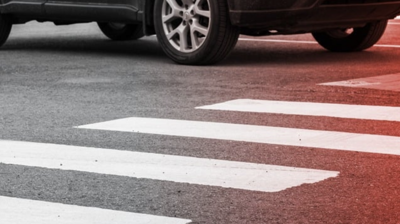T-bone collisions can happen quickly and without warning, leaving drivers and passengers with severe injuries.
If you or someone you love has been injured in a T-bone car accident, you may be entitled to compensation for your injuries, medical bills, lost wages and more. However, there first needs to be a determination of fault.
Determining fault in a T-bone accident can be complex. In this blog post, we will discuss what a T-bone collision is, common causes of these accidents, and how Missouri law defines fault in a car accident.
We will also examine who is typically at fault in a T-bone accident and provide information on how to seek legal help if you have been injured in this type of accident.
What is a T-bone collision?
A T-bone collision occurs when the front of one vehicle hits another at a perpendicular angle, forming a “T” shape. These types of accidents are also known as side-impact or broadside collisions. T-bone collisions can happen at intersections, parking lots or driveways. They often occur when one driver fails to yield to the right of way of another driver.
T-bone car accidents can be particularly dangerous because the sides of vehicles have less protection than the front or rear. In addition, the force of the impact can cause the car to spin, roll over, or collide with other vehicles or objects, increasing the risk of injury or death.
Common T-bone accident injuries include whiplash, head and neck trauma, broken bones, lacerations, and internal injuries.
Common causes of T-bone car accidents
There are several reasons why T-bone accidents occur. Some of the most common causes include:
- Running a stop sign or red light: Drivers who run a red light or stop sign can collide with oncoming vehicles crossing the intersection.
- Distracted driving: Drivers who are distracted by their phones, passengers, or other activities can fail to see a vehicle crossing their path.
- Drunk or impaired driving: Drivers who are under the influence of drugs or alcohol can have impaired judgment, making it difficult to avoid a collision with another vehicle.
- Driver loses control of their car on a slippery road: Poor weather conditions, such as snow or ice on the roads, can make it difficult for drivers to control their vehicle and may lead to a side-impact collision.
How Missouri law defines fault in a car accident
Missouri law follows a “pure comparative fault” system when determining fault in a car accident. This means that each driver involved in the accident is assigned a percentage of fault based on how their actions led to the accident.
The fault assigned to each driver impacts the amount of compensation they are entitled to receive. For example, one driver may be found 30% responsible while one is found 70% responsible, and they will be required to pay 70% of the damages.
Under Missouri law, a driver can be found at fault for an accident if they are negligent. Negligence is defined as failing to act with the care that a reasonable person would exercise in the same or similar circumstances. Negligence can include actions such as speeding, failing to yield, or running a red light.
Who is at Fault in a T-Bone Accident?
There are often multiple factors at play, so it can be difficult to assign fault in T-bone cases. In some situations, both drivers may be liable for the accident.
In a T-bone crash, the driver who fails to yield the right of way to another vehicle is typically considered at fault.
Need legal help?
If you have been injured in a T-bone car accident, it is essential to seek legal representation from a car accident attorney to protect your rights and ensure you receive the compensation you deserve. The personal injury law firm of Niemeyer, Grebel and Kruse can help.
We understand the challenges that come with being injured in a car accident, and we are committed to helping our clients through every step of the legal process.
Contact NGK Law today at (314) 350-1900 to schedule your free consultation.






